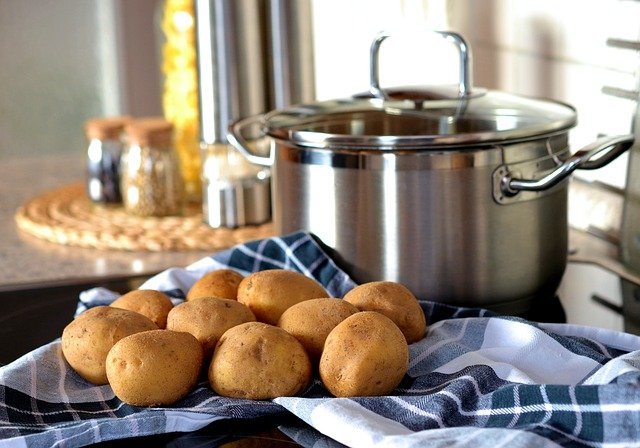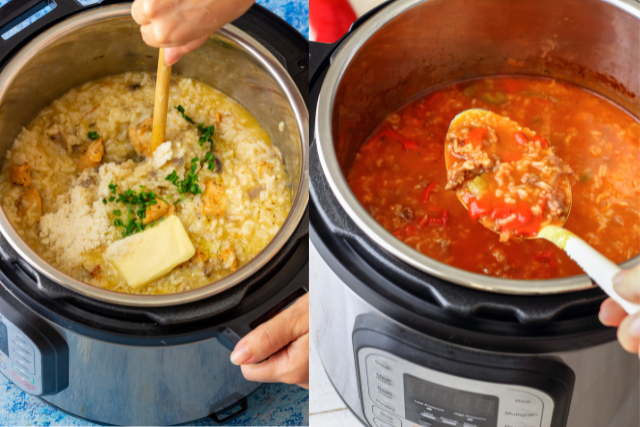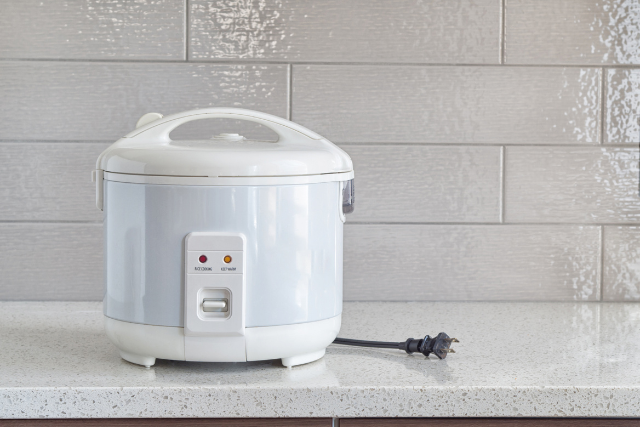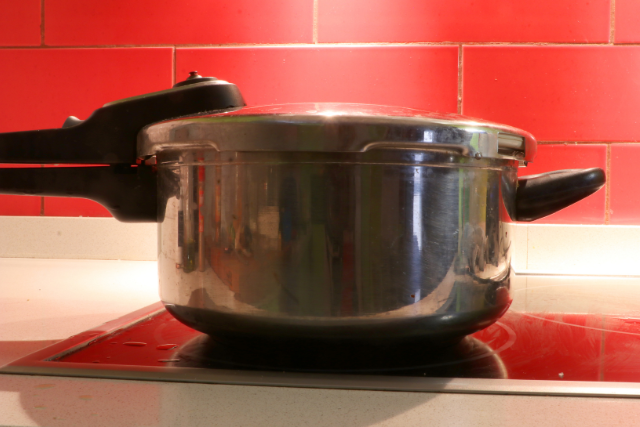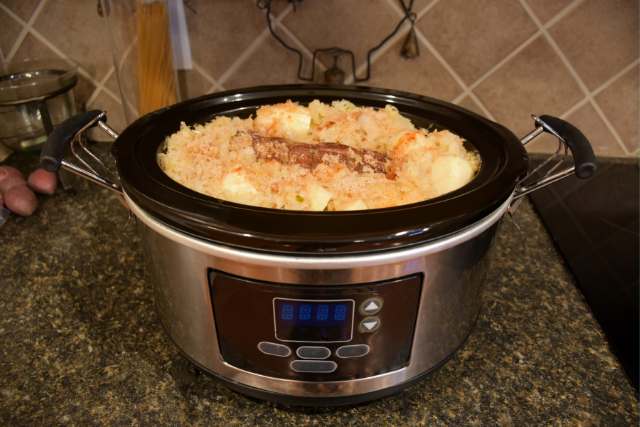How to ensure 100% safety while working with Pressure Cookers?
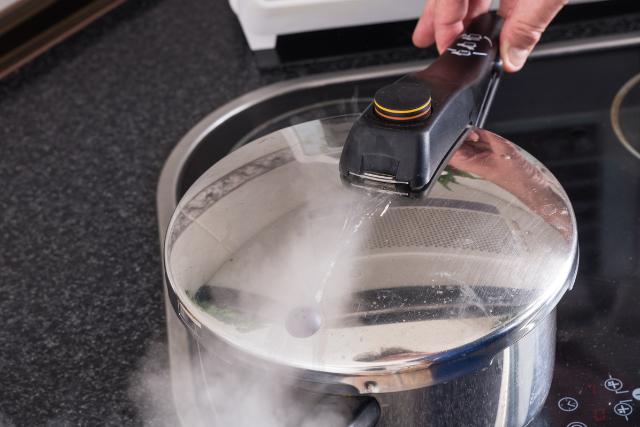
Ensuring 100% safety when working with pressure cookers is crucial, especially in the hustle and bustle of busy Indian kitchens. Pressure cookers have had a reputation for being risky cooking devices that could potentially result in explosions.
However, it’s important to note that this reputation mainly applies to poorly maintained and outdated models that lack advanced safety features. In the past, early pressure cookers with only a primary safety valve did carry some risks. If not properly maintained or if food residues contaminate the release valve, the possibility of explosions exists.
Now, the story has changed with modern pressure cookers. Manufacturers have significantly improved user safety by incorporating multiple safety features into today’s models.
Our goal is to provide you with essential safety guidelines that will allow you to use your pressure cooker with peace of mind. We will delve into the various safety features found in modern pressure cookers, including improved safety valves, backup pressure release systems, and advanced lid-locking mechanisms. These features work harmoniously to create a safe and secure cooking environment.
By understanding and implementing these safety guidelines, you can confidently use your pressure cooker, knowing you take every precaution necessary to prevent accidents. We believe that responsible handling and knowledge of safety features are key to enjoying the benefits of pressure cooking without any concerns.
So, let’s dive into the details and explore how you can ensure 100% safety while working with pressure cookers. With the correct information and practices, you can create delicious meals while prioritizing the well-being of yourself and your loved ones.
Safety Features in Pressure Cookers
Modern pressure cookers have various safety features to protect the user and prevent potential accidents. These features work together to maintain a safe cooking environment, especially when dealing with high pressures and temperatures. Let’s explore some of the standard safety measures found in pressure cookers today:
Safety Valves: Most pressure cookers include two or three separate safety valves. These valves serve as pressure release mechanisms if the pressure inside the cooker exceeds safe levels. The primary safety valve is typically a weighted stopper, often called “the rocker” or “vent weight.” When the pressure exceeds a certain threshold, the steam lifts this weighted stopper, releasing excess pressure.
Pressure Release Backup System: If the primary release mechanism fails, pressure cookers are designed with a backup pressure release system. This backup system utilizes various strategies to swiftly release pressure and ensure the cooker doesn’t reach dangerous levels. Examples of backup systems include a hole in the lid closed with a low melting point alloy plug or a rubber grommet with a metal inlay that distorts and blows out if the pressure is too high.
Gasket Design: Pressure cookers incorporate a gasket, a sealing ring between the lid and the pot. The gasket is designed to expand and release excess pressure downward, ensuring a secure and reliable seal. If the pressure inside the cooker becomes too high, the gasket allows pressure to escape, preventing any potential build-up.
Pressure Indicator: Some pressure cookers feature a pressure indicator that rises above its housing when excess pressure is inside the cooker. This serves as a visual cue to the user, indicating that the pressure needs to be released before opening the cooker. The pressure indicator directs the pressure to be released vertically upwards.
Lid Locking Mechanism: Many modern pressure cookers employ a lid-locking mechanism with flanges that secure the lid onto the pot. This mechanism often works similarly to a bayonet-style lens attachment. It ensures the lid is locked in place before the pressure builds up. Furthermore, pressure-activated interlock mechanisms are implemented in some designs, preventing the lid from being removed while the cooker is pressurized.
These safety features collectively ensure the safe operation of pressure cookers by regulating pressure and preventing accidental openings while under pressure. They provide users with peace of mind, allowing them to enjoy the convenience and efficiency of pressure cooking without compromising their safety.
Tips for 100% safety while working with pressure cookers
Follow these instructions to get ideal pressure cooker results without worrying about further problems. These guidelines will also provide a safer and more effective cooking experience with your good-quality branded pressure cooker.
Get a brand new Pressure Cooker & examine it thoroughly
The first thing is to have a safe pressure cooker from a well-known brand. Ensure the pressure cooker’s pot and cover are free of dents and fractures. Pressure cookers are prone to damage since they cook under high pressure. If a cooker has been dropped, it should be thoroughly examined for damage. Each type of cooker has unique safety procedures, so read and follow the manufacturer’s instructions.
Electric pressure cookers are the latest innovation in this field. Most electric pressure cookers contain many safety measures. If that doesn’t appeal to you, many will automatically switch off when the PSI reaches a harmful level. A newbie to pressure cookers couldn’t ask for a better solution. Explosions are rare if you use and maintain them appropriately. It uses a microchip to release steam.
Check Your Pressure Cooker and rubber gasket before you cook
Ensure the rubber gasket isn’t damaged or dried up at the beginning of cooking. Some manufacturers recommend replacing the gasket annually, depending on how often you use your stove. If yours gets ripped just as you’re starting a dish, you might want to order one additional to keep on hand.
Ensure there’s no dried food on the pot’s rim, as this could cause the seal to break. Never use a pressure cooker without a rubber gasket. The gasket is the rubber ring seal on the lid’s underside. It creates a seal and allows pressure to accumulate. Replace the rubber gasket when it becomes hard or sticky.
Cooker Shouldn’t Be Overfilled
The amount of liquid within the pressure cooker causes excessive pressure. Too much food in the pressure release vent can cause a blockage. Unless the steam can escape, the pressure builds until it explodes. A stove-top pressure cooker without the technology could explode.
Overfilling a pressure cooker increases the risk of an explosion and degrades the food’s texture and flavor by destroying vitamins and minerals. To avoid the danger of food obstructing the vents, fill the pressure cooker no more than two-thirds full for most items. Foods that swell while they cook, such as beans and grains, should only fill the cooker halfway.
Cooking Frothy Foods Should Be Approached With Caution
Some foods like rice, corn, and beans expand when cooked and cause the pressure cooker to overfill. Fill the pressure cooker only halfway for this food. You certainly don’t want the food to swell to the point of explosion, right..?
The foaming might cause the steam valves and pressure-release vents to get blocked. Pasta, rhubarb, split peas, oatmeal, applesauce, and cranberries are some frothy foods. If you prepare these meals, stick to a tried-and-true recipe and keep the amount in the pot below the maximum fill line.
Slice food items evenly.
Food should be sliced into uniformly sized pieces to ensure they cook at the same rate. You can use a cutter, chopper, or slicer to evenly cut the food items like potatoes, tomatoes, vegetables, etc. This will avoid overcooking certain pieces.
It is recommended that the meal be marinated or parboiled before cooking. Cooking time varies per recipe and relies on the components used. Rice, fruits, vegetables, and chicken require varying cooking times, as does the amount of water used.
Using a Safe Method to Release Pressure
You can release pressure in three ways: by simply removing the cooker from the heat and letting it rest until the pressure drops naturally (natural release), by running cold water over the closed pan’s lid (cold water release), or by utilizing the pot’s steam release valve (quick release).
Natural release is good for meals you want to keep cooking and is safer than quick-release. Wait for the pressure in the pot to drop before opening it. Forcing it open can cause it to explode. Most experts advise waiting 10 minutes before opening the lid, but others advise waiting 30 minutes until all the pressure has gone.
When using the cooker, use potholders to protect your hands, and keep your face, hands, and body away from the steam vent if utilizing the quick-release method. When you open the cooker after the steam has been released, hot steam will still emerge from the pan, so tip the lid away and hold it over the pan to prevent the hot condensation from dripping onto you.
Ensure that the Cooker is in good working order.
Remove the gasket, the cover, and the pot from the pot and wash them separately. With a wooden toothpick, clean the valve to ensure it is free-moving and not jammed. Instead of being locked in place, store the cooker with the lid on the pot upside down.
The rubber gasket seal and the steam vent tube are vital pieces of this appliance, so make sure they’re clean, solid, and not split or broken. Keep the exhaust tube clean with the pressure cooker’s cleaning tool or a pipe cleaner.
These guidelines will assist you in safely and successfully preparing meals in your pressure cooker. (Know more: How To Clean A Pressure Cooker: Ultimate Guide)
What to do when Pressure Cooker Safety Valve starts leaking?
A pressure cooker safety valve is an essential component of a pressure cooker that helps regulate the pressure inside the pot. It is designed to release steam and pressure from the pot to prevent the pressure from building up beyond a safe limit. However, if the safety valve leaks, it can cause problems in the cooking process, such as uneven cooking, longer cooking times, and even safety hazards.
If you notice that the safety valve on your pressure cooker is leaking, it’s important to address the issue as soon as possible. Here are some steps you can take to troubleshoot and fix the problem:
- Check the seal: Ensure the lid’s gasket or seal is clean, dry, and properly seated. If the seal is damaged, it may need to be replaced.
- Check the water level: If the water level in the pressure cooker is too low, it can cause the safety valve to leak. Ensure you use the recommended amount of water or cooking liquid for the recipe.
- Clean the valve: The safety valve may become clogged with debris or food particles, causing it to leak. Try cleaning the valve with a soft brush or toothbrush to remove buildup.
- Replace the valve: If the safety valve is damaged or worn, it may need to be replaced. Check the manufacturer’s instructions for the correct replacement part and how to install it.
By investing in a modern pressure cooker and following proper usage guidelines, you can confidently use this convenient cooking technology without worry. Remember to maintain your pressure cooker regularly, clean it thoroughly, and adhere to the manufacturer’s instructions to maximize safety and enjoy the benefits of pressure cooking without any concerns.
So, rest assured that today’s pressure cookers have come a long way regarding safety. With the proper care and attention, you can cook delicious meals with ease while ensuring the well-being of yourself and your loved ones. Happy and safe pressure cooking in your vibrant Indian kitchen!
Concluding Remarks
Always refer to the manufacturer’s instructions and guidelines specific to your pressure cooker model for the best practices in ensuring safety during usage. By following these guidelines, you can enjoy the benefits of pressure cooking while maintaining a safe cooking environment.
If you have further questions or concerns about pressure cooker safety, please consult the user manual or the manufacturer for assistance.
Frequently Asked Questions
Que: Are pressure cookers safe to use?
Ans: Pressure cookers are safe when proper safety guidelines are followed. Modern pressure cookers have various safety features that significantly reduce the risk of accidents or explosions.
Que: How do pressure cookers work to ensure safety?
Ans: Pressure cookers create a sealed cooking environment, allowing the pressure to build up and raise the boiling point of liquids. Safety features such as improved valves, backup pressure release systems, and advanced lid-locking mechanisms ensure that excess pressure is released safely and the cooker remains secure during operation.
Que: What are the standard safety features in pressure cookers?
Ans: Common safety features in pressure cookers include safety valves, backup pressure release systems, gasket design for pressure release, pressure indicators, lid locking mechanisms, and stable construction to prevent tipping or spilling.
Q: How should I maintain my pressure cooker to ensure safety?
A: To ensure safety, it’s crucial to maintain your pressure cooker regularly. Clean it thoroughly after each use, inspect the components for any damage or wear, and follow the manufacturer’s instructions for proper maintenance. Regularly check and clean the pressure-release valves and vents to ensure they are clear and functioning correctly.
Que: Can pressure cookers explode?
Ans: When used correctly and maintained properly, the risk of pressure cookers exploding is extremely low. Modern pressure cookers have safety features in place to prevent such incidents. Following the manufacturer’s instructions and guidelines for safe usage is essential.
Que: What precautions should I take when using a pressure cooker?
Ans: Some essential precautions to take when using a pressure cooker include reading the user manual thoroughly, inspecting the cooker for any visible damage, using the cooker on a stable surface, ensuring the lid is locked correctly, avoiding overfilling, using heat-resistant mitts or gloves when handling, and allowing the cooker to cool down before opening.
Que: Can I leave a pressure cooker unattended while cooking?
Ans: It is not recommended to leave a pressure cooker unattended while it is in use. It’s essential to monitor the cooking process and follow the recommended cooking times and safety guidelines provided by the manufacturer.
Que: Are pressure cookers suitable for all types of recipes?
Ans: Pressure cookers are versatile appliances suitable for various recipes. However, it’s essential to refer to specific recipe instructions and adjust cooking times and settings accordingly.

